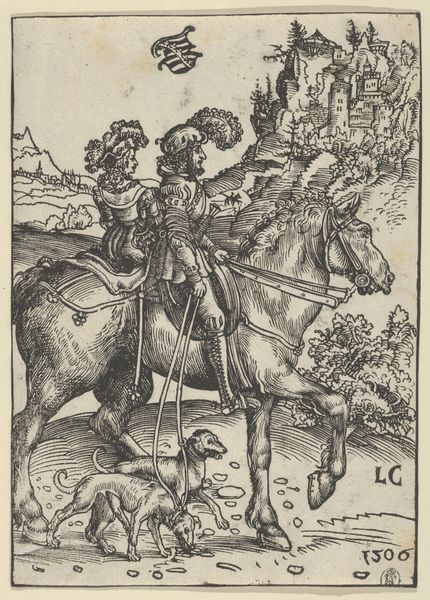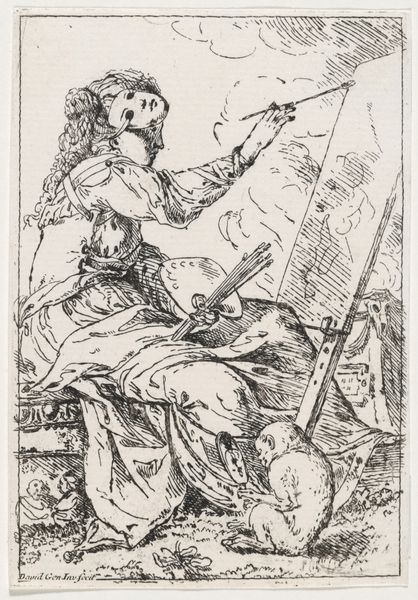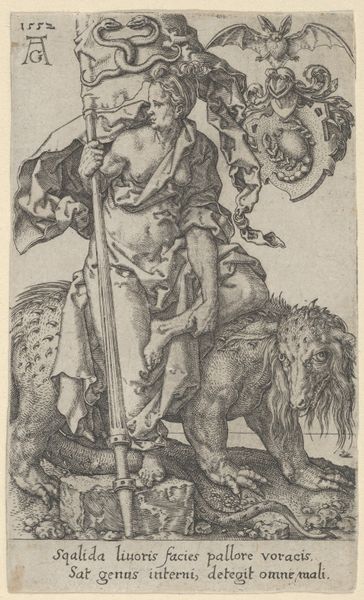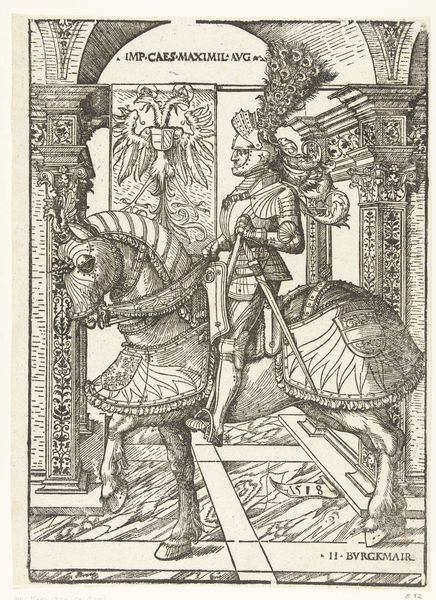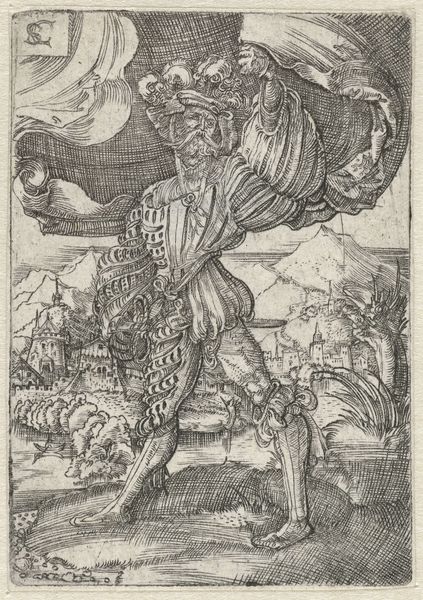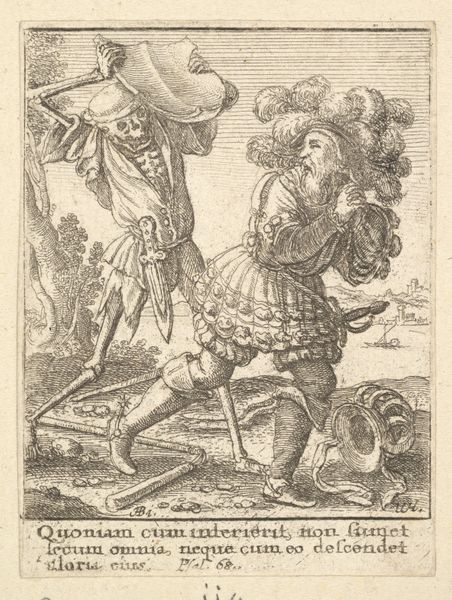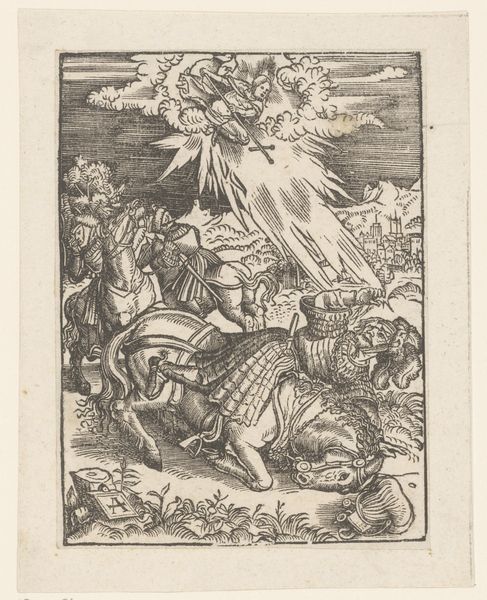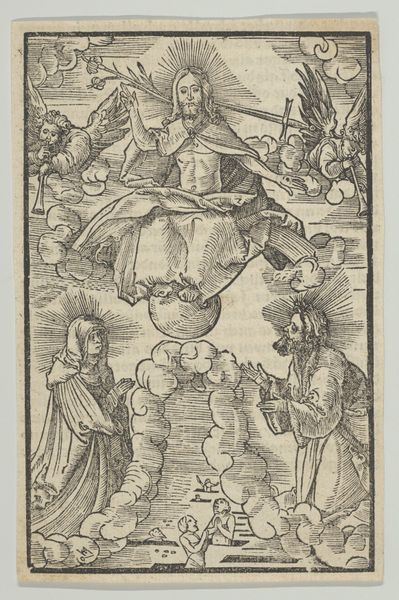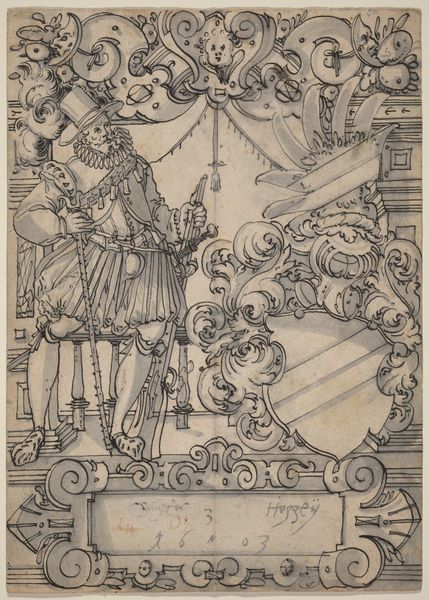
St George on Horseback with the Dead Dragon 1472 - 1553
0:00
0:00
drawing, print, woodcut
#
drawing
# print
#
landscape
#
figuration
#
woodcut
#
history-painting
#
northern-renaissance
Dimensions: Sheet: 9 1/8 × 6 7/16 in. (23.2 × 16.3 cm)
Copyright: Public Domain
Editor: This is Lucas Cranach the Elder’s "St. George on Horseback with the Dead Dragon," a woodcut print, probably made somewhere between 1472 and 1553. I find the stark black and white quite striking. What cultural role did images like this play back then? Curator: That's a great observation! Think about the historical context. This print, made during the Reformation, depicts St. George, a figure often associated with courage and righteousness. But why depict this particular scene in this format? Editor: I guess making it a print made it easier to distribute? Curator: Precisely. Cranach was close to Martin Luther. Prints were a powerful tool for disseminating Reformation ideology. By portraying St. George triumphing over evil—the dragon—the print could be interpreted as a symbolic victory of Protestant ideals over perceived Catholic corruption. Notice also the detail given to the landscape, almost as much detail as St. George himself. Does that imply something about the region or its politics? Editor: It’s definitely detailed! The setting feels significant somehow, rather than just a backdrop. I suppose by tying the scene to a familiar landscape, the message becomes more relevant locally? Curator: Exactly. Furthermore, consider the intended audience. Prints were often accessible to a broader range of people than, say, large-scale paintings. Editor: So it was about democratizing the message, getting it to the masses. It's interesting how a single image can have so many layers. Curator: It highlights how art reflects the social and religious dynamics of the time. I found the experience rewarding too!
Comments
No comments
Be the first to comment and join the conversation on the ultimate creative platform.

